Muscle fiber
individual cell with multiple nuclei
Sacromere
Fundamental unit within each muscle fiber
Contractile proteins [AKA active] (actin & myosin)
shorten the muscle & generate force
Noncontractile proteins [AKA structural]
provide supporting structure for contractile proteins
Structural proteins/skeletal muscles are important:
- Generate passive tension when stretched
- Provide internal & external support/alignment for the muscle fiber
- Assist in force-transfer
Collagen & elastin
structural support & elasticity to the muscle
Skeletal Muscle Types
- Epimysium
- Perimysium
- Endomysium
Epimysium
tough outer covering that separates the muscle belly from other structures in the body
Perimysium
divides the muscle into fascicles & allows room for blood vessels & nerves to travel
Endomysium
- surrounds individual muscle fibers.
- Helps convey force of contraction
- Shows sight of metabolic exchange between fibers and capillaries
Muscle Morphology
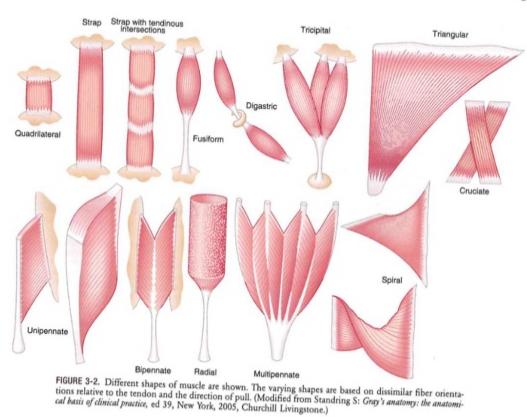
Fusiform & pennate are most common
Physiologic Cross-sectional Area (PCSA)
- Amount of active proteins available to generate a contraction force
- cut perpendicular through the muscle belly, divide muscle volume/muscle length
- PCSA EQUATION
- More PCSA =
- PCSA = V/L
- more force generating capacity + more/high pennation (assuming similar morphology)
Pennation Angle
- Angle of orientation between muscle fibers & tendon
- 0 degrees = 100% of force transfer; 30 degrees = 86%
- *most human muscle has pennation angles between 0 & 30 degrees*
Generating Force: Passive Length-Tension
Curve
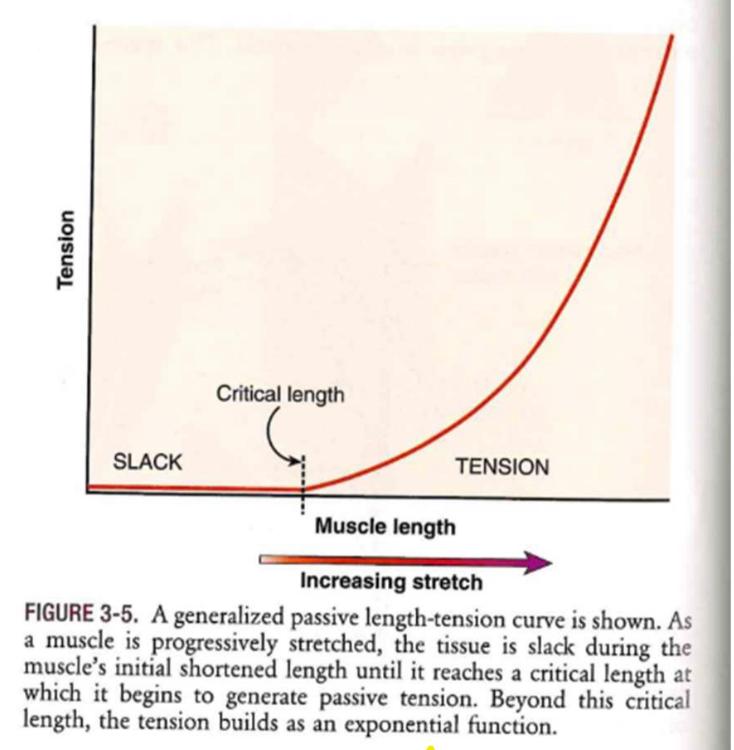
- Generating Force: Passive Length-Tension Curve
- Stretching + spring-like resistance
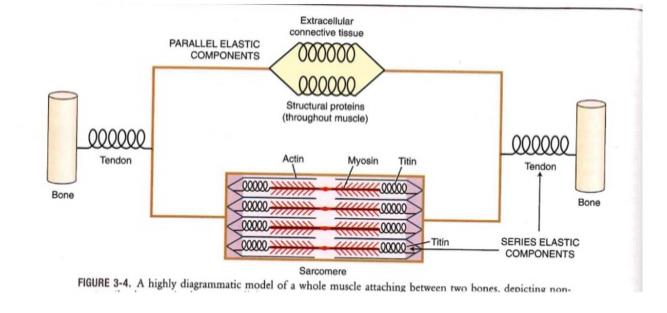
- As you stretch a muscle passively, both the tendon (series) and extracellular CT (parallel) generate a spring-like resistance
Muscles during Passive Length-Tension Curve
- Muscles lose ability to contract due to lack of overlap of actin/myosin.
- passive resistance still provides force to stabilize joints
Passive Length-Tension Curve: Elastin
- elasticity also allows some level of energy storage
- Muscles also demonstrate viscoelastic properties
- The higher the velocity of stretch = higher the passive stiffness
- Elastin+KE+Muscle contraction = we can jump+sprint
Generating Force: Active Length-Tension
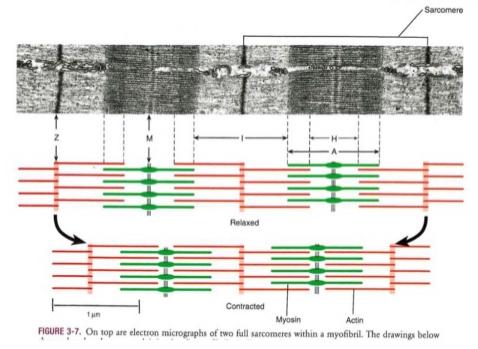
- Requires stimulation from nervous system
- Sliding filament theory
Generating Force: Active Length-Tension (Sliding Filament Theory)
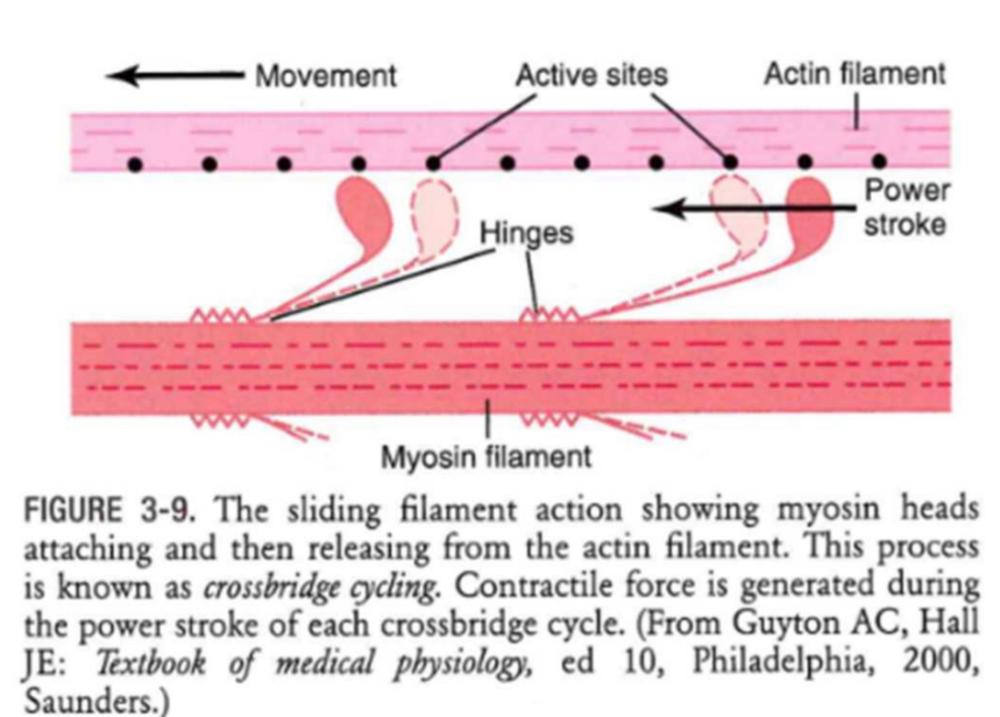
Sliding Filament Theory
- amt of active force depends (in part) on the length of the muscle at that instant • (tells us how much crossbridging is occurring)
- ideal resting length =length that allows the most crossbridging!
Sliding Filament Theory (sarcomere)
- As a sarcomere is lengthened/shortened (past resting length)
- => less potential crossbridges=> less potential force generation
The TOTAL length-tension relationship
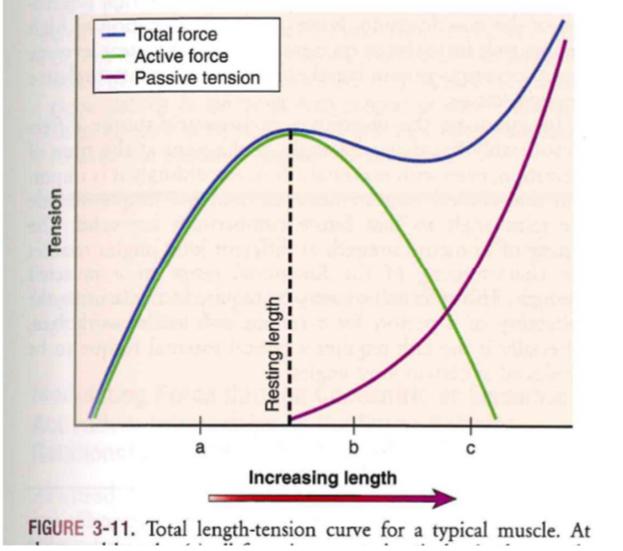
Internal Torque-Joint Angle Curve
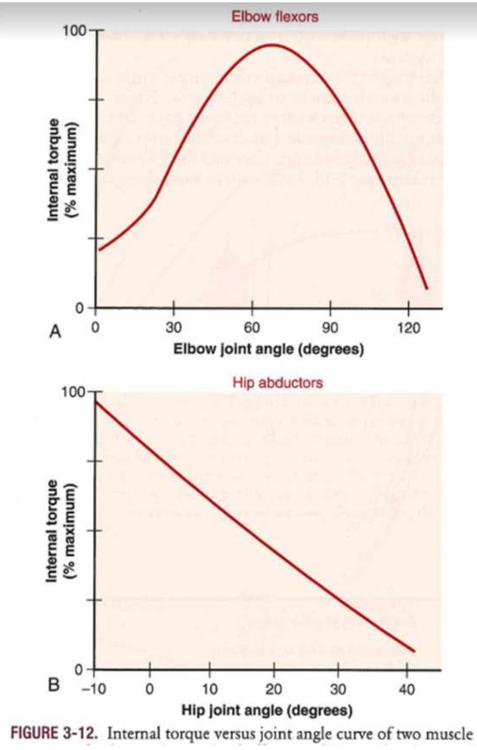
- Elbow
- Hip
Internal Torque-Joint Angle Curve (muscle)
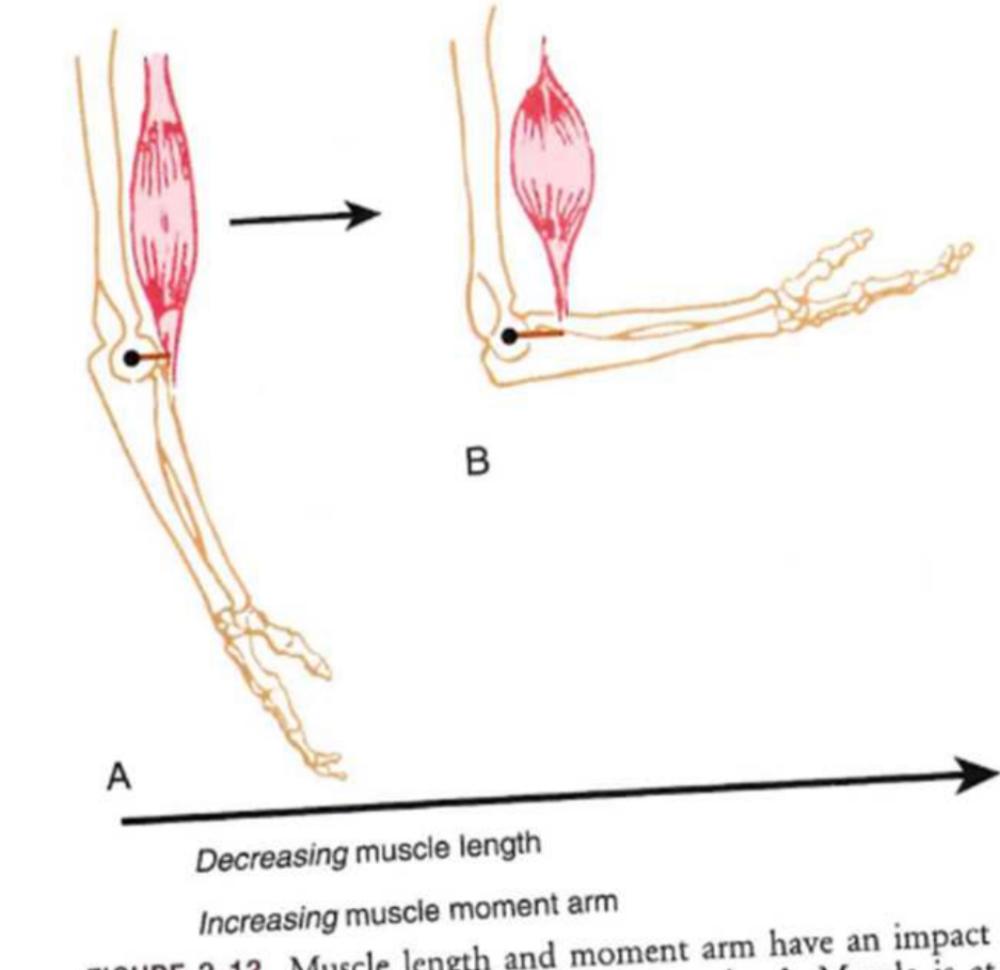
- Different for each muscle group
- Muscle length & muscle moment arm are constantly changing!
Force-Velocity Curve
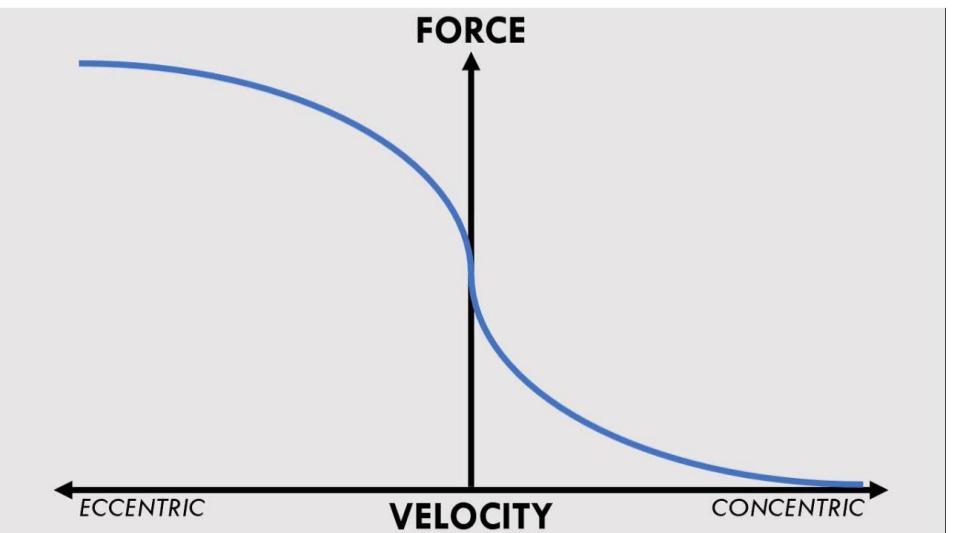
Force Velocity Curve: 3 contractions
- concentric
- eccentric
- isometric
Concentric (FVC):
- Internal (muscle) torque > external (load) torque to produce
movement. - Muscle length shortens
Eccentric(FVC):
- muscles are driven by the nervous system, internal torque < external torque
- The muscles are forced into lengthened positions
Isometric(FVC):
- length of muscle remains the same.
- Internal torque =
external
torque.
Max effort concentric contraction (FVC):
- muscle force is inversely
proportional to velocity of muscle shortening - Limited by speed of crossbridging
Max effort eccentric contraction(FVC)
directly proportional to the velocity of muscle lengthening
Eccentric force production >> concentric
force production
- A greater average force per crossbridge, because they are pulled apart
- A more rapid reattachment of crossbridge formation
- Passive tension produced by viscoelastic nature of the stretched series & parallel elastic element
- —-—
- the metabolic costs & EMG activity are less
- Because eccentric contractions (assume force is equal) require
less
muscle fibers
Power equation
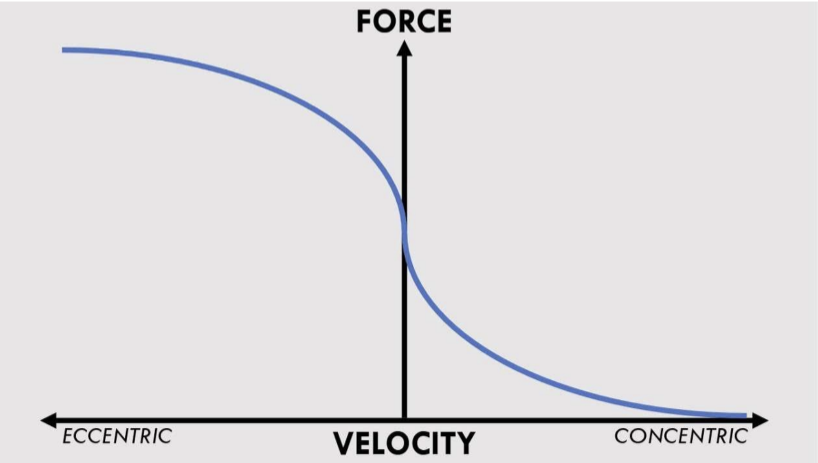
Work/time
Alpha Motor Neurons
- in ventral spinal cord
- can be stimulated by multiple
inputs, but
primarily the decending cortical neurons (messages from your brain)
motor unit
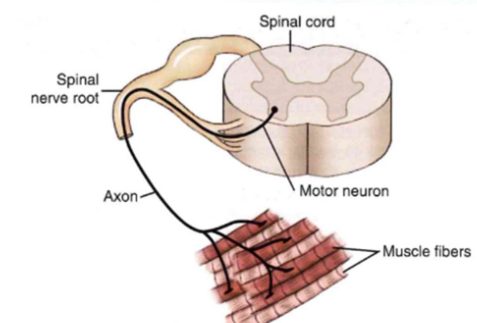
alpha motor neuron and all of the muscle fibers it
innervates
Motor unit recruitment
- Motor units are recruited according to the amount of force
required
for the task - Innervation ratio: Depending on the muscle, each alpha motor neuron may innervate between 5-2000 muscle fibers
Henneman’s Size Principle
- Smaller motor neurons are recruited before bigger
motor neurons- allows for smooth & controlled increments
in
force development
- allows for smooth & controlled increments
in
Small motor units
- longer twitches (hence “slow fibers”), hand/eye
- lower force,
- more fatigue-resistant
Large motor units
- short twitches, thigh/hip
- higher force output
- easily-fatiguable
Fiber typing
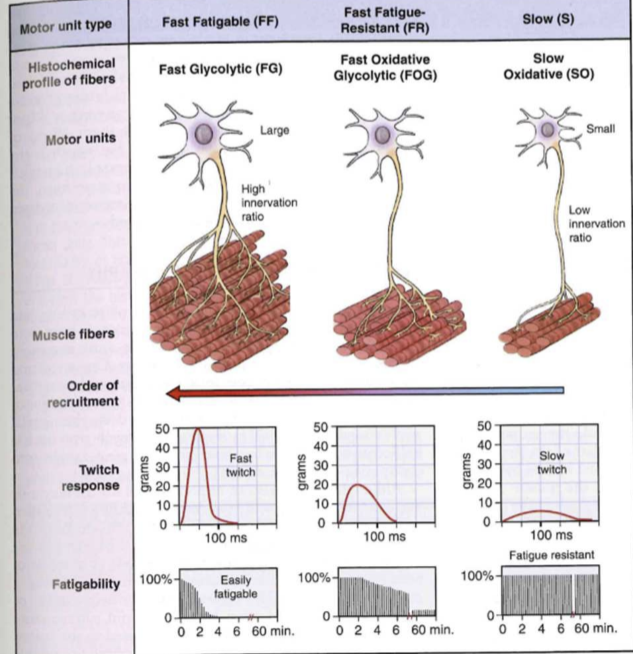
Rate coding // Neural Drive
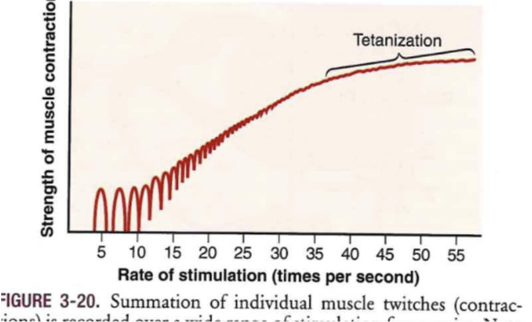
- force produced by a muscle is dependent
on subsequent sequential action potentials- “how hard the CNS is driving a muscle”
- Need more force produced = CNS sends more signals
- No relaxation btn twitches = fused tentany
- dependent upon the length of the twitch! (slow MU = tentany at lower freq)
Choosing between recruitment & rate-coding: eccentric activation:
High force per crossbridge ==> less motor units required
Choosing between recruitment & rate-coding: Concentric activation
Lower force per crossbridge ==> more motor units required
Choosing between recruitment & rate-coding: Rapid task
Higher rate coding
Electromyography (for muscle recruitment)
- Measuring the sum of the change in voltage from all action potentials sent to an activated muscle
- indwelling (fine
wires into the muscle) or surface
(electrodes on skin)
The Law of Parsimony
- nervous system solving movement problems
- Force, joint angles, goals, motivation, fears, etc.
- nervous system activates the fewest muscles or muscle fibers
possible for joint action control
- Henneman’s Size Principle
- Rate Coding
- Energy Efficiency